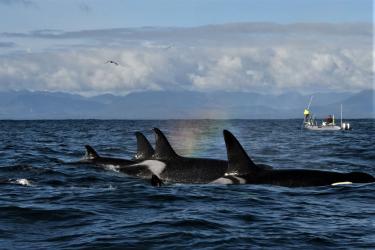NOAA Fisheries has launched a new online tool to help seafood traders easily identify our import and export monitoring requirements for their products. The Seafood Import and Export Tool walks users through a handful of questions about the products they wish to trade. Users walk away confident that they know which NOAA trade monitoring programs they must comply with for their specific seafood products.
More than 85 percent of the seafood consumed in the United States is imported or re-imported after going overseas for processing. NOAA Fisheries oversees four trade monitoring programs that establish reporting and recordkeeping requirements for products entering and leaving U.S. markets. Together, these programs help safeguard the national economy, global food security, and the sustainability of our shared ocean resources.
The largest program is the Seafood Import Monitoring Program. Launched in 2018, SIMP focuses on 13 species and species groups identified as vulnerable to illegal, unreported, and unregulated fishing or seafood fraud.
The other three programs are more narrowly focused. The Tuna Tracking and Verification Program monitors domestic cannery production and importation of all frozen and processed tuna products nationwide. It is the only U.S. program that can legally authenticate claims that a product is “dolphin safe.”
The Atlantic Highly Migratory Species International Trade Program establishes requirements for imports of highly migratory fish caught in the Atlantic, Pacific, and Indian Oceans. It also implements traceability requirements set by international organizations that manage shared fisheries. And the Antarctic Marine Living Resources program monitors the trade of Antarctic krill and toothfish—commonly known as Chilean sea bass—to ensure regional conservation measures are followed. Both of these programs also set export requirements for some products.
The data from all four programs is submitted through the International Trade Data System, the U.S. government’s single trade data portal. This system allows us to trace species and products monitored by our programs back to the point of harvest or production. That in turn makes it possible to verify the product was lawfully harvested or produced. Providing additional support to seafood dealers to meet our requirements helps ensure our seafood is caught and imported legally.



